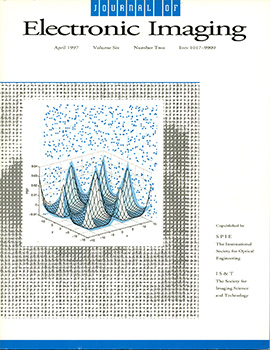Wolfgang Eckstein, Carsten Steger
Journal of Electronic Imaging, Vol. 6, Issue 02, (April 1997) https://doi.org/10.1117/12.266862
TOPICS: Visualization, Computer programming, Image processing, Inspection, Machine vision, Computer vision technology, Computing systems, Image analysis, Image visualization, Image segmentation
An integrated program development environment for computer vision tasks is presented. The first component of the system is concerned with the visualization of 2-D image data. This is done in an object-oriented manner. Programming of the visualization process is achieved by arranging the representations of iconic data in an interactively customizable hierarchy that establishes an intuitive flow of messages between data representations seen as objects. The visualization objects, called displays, are designed for different levels of abstraction, starting from direct iconic representation down to numerical features, depending on the information needed. Two types of messages are passed between these displays (update and result messages), which yield a clear and intuitive semantics. The second component of the system is an interactive tool for rapid program development. It helps the user in selecting appropriate operators in many ways. For example, the system provides context sensitive selection of possible alternative operators as well as suitable successors and required predecessors. For the task of choosing appropriate parameters several alternatives exist. For example, the system provides default values as well as lists of useful values for all parameters of each operator. To achieve this, a
knowledge base containing facts about the operators and their parameters is used. Second, through the tight coupling of the two system components, parameters can be determined quickly by data
exploration within the visualization component.



 Receive Email Alerts
Receive Email Alerts